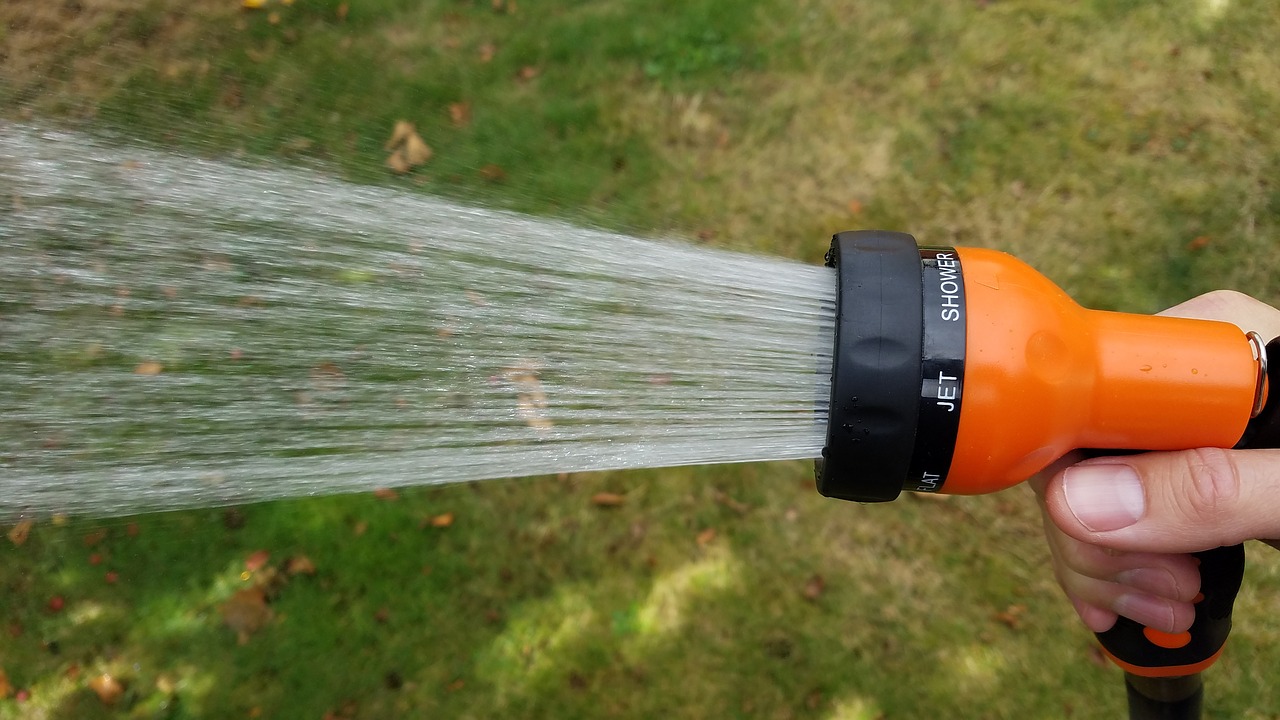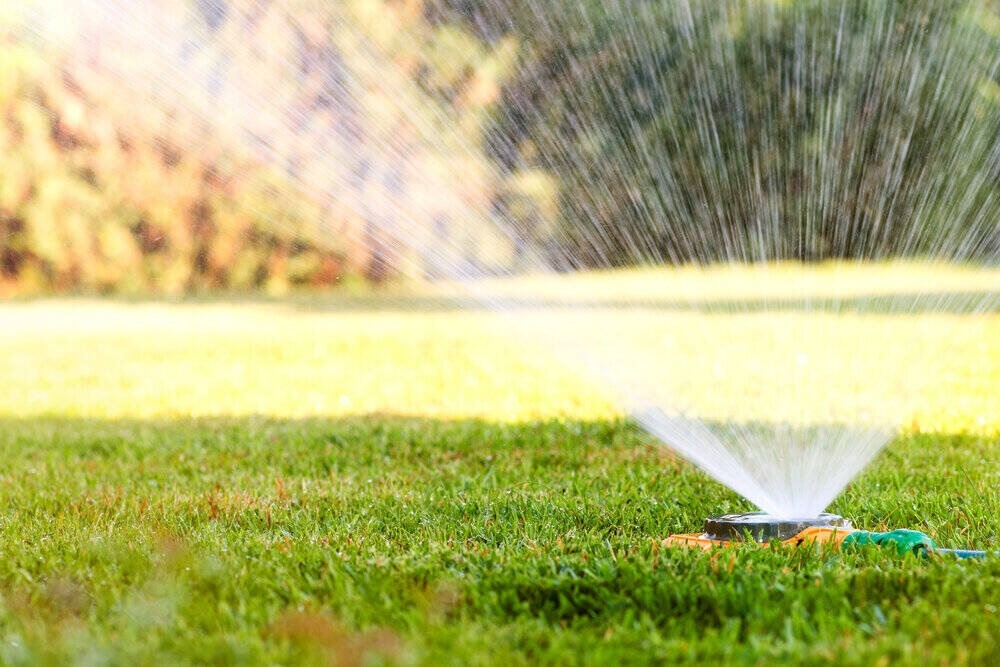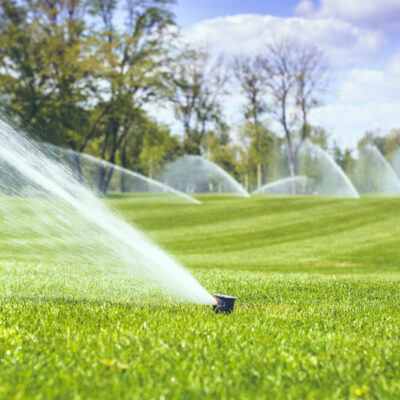How often you should water grass and for what duration depends on several things, including the type of grass, the type of soil in which it's planted, the amount of sun and rainfall, and for what the grass is used, whether it's a traditional lawn or a sports playing surface.
Here in the UK, we are famous for our beautifully manicured lawns. We’re lucky in as much as we get a fair amount of rainfall every year, although some people might feel we get too much.
Watering Your Lawn is a Choice, not a Necessity
Watering your lawn should be thought of as more of a choice than a necessity. Grass isn’t like most plants because when moisture levels get critically low, whereas as most plants will wither and die, grass goes into a state of dormancy. It can even turn brown, but as long as the root system is in good condition when moisture becomes available it will green up once again.
There are several good reasons for not watering your lawn. For example, there are conservation issues, particularly when water reservoirs are low. Also, some people might need to consider cost issues.
But on the flip side of the coin, there are good reasons for keeping your lawn watered, such as providing a good surface for your kids to play on, as part of a seeding or turfing project, or simply trying to keep your lawn looking green and lush.
How Often Should You Water?
Don't just develop and stick to some sort of arbitrary plan. All lawns are different in terms of the type of grass and soil, and geographical location with varying exposure to sunshine, wind, and rainfall.
How well you maintain your lawn makes a difference too. If it is well fertilised and has a healthy root system, it will tolerate drier times better than a lawn starved of nutrients will. It can make all the difference in determining whether, in the same weather conditions, your lawn needs watering once a week or once a month.

A garden house with good water pressure.
Signs of Distress for Which to Look Out
When your grass is starting to struggle a little, the first sign to keep an eye open for is colour change. The vibrant green will dull down, and the grass will lose a little of its “springiness.” You might notice leaving footprints where you've walked across the grass, whereas before, it would have sprung straight back into shape.
If you’ve left it too long and the grass has turned brown, you might want to consider letting it get into its dormant state. As we said earlier, it should recover when moisture is abundant.
At What Sort of Intervals Should I Water My Lawn?
If you water your grass too little, or too often, or at the wrong times, it can promote disease. The growth of moss and weeds can cause shallow rooting. Knowing the right time and how much water to apply, and at what sort of intervals, can prevent you from doing more harm than good.
Determining the Watering Duration
It’s difficult to know how long to spend watering a lawn, but a general rule for good lawn care is that a lawn needs something like an inch of water week for optimal growth. It’s best to water once or twice a week – deep and infrequent is better than often and shallow.
One way of measuring the amount of water you need is to measure the length and width of your garden and multiply them together to give you the square footage, which you then multiply by 0.623 to tell you how many gallons of water you need per square foot.
The size of the average garden in the UK is 10 781 square feet, which, when multiplied by 0.623, means you will need 6,772.63 gallons per week.
If you have a sprinkler system, you can tell how much water your lawn is getting by placing a straightish-sided receptacle, like a plastic coffee container, on your lawn within easy reach of the sprinkler spray area. Turn on the sprinkler and let it run for 30 minutes, after which you can turn it off and measure how much water is in the receptacle.
According to the Spruce.com website, the average sprinkler system will deliver one inch of water in about one hour.
If you are not getting the desired half an inch after 30 minutes, adjust your irrigation duration accordingly. This may take a few adjustments to get it about right.
If you have an oscillating type of sprinkler that you attach to your garden hose because it has to be repositioned to irrigate every portion of the lawn, watering a large lawn will take longer. It will be quicker if you have an automatic irrigation system, as this type of system is designed to irrigate the whole lawn at once.
When You Should Water Your Lawn

The best time for watering your lawn is in the early morning. That is when the sun is at its lowest, and its effect is at its coolest as it rises. Less heat means less evaporation which allows the water a better chance of working its way down into the root zone. It also means that the blades of grass are given a better chance of drying out before night comes. If grass remains wet is subjected to a greater chance of developing fungal disease.
Watering New Lawns
New lawns require watering regularly – so watch out if rainfall is insufficient. Watering every 7 days should be sufficient but try not to over-water. If you do, you run the risk of the roots being too shallow. You want to try to ensure that after watering, the moisture reaches a depth of around 4 inches or 10 cm.
The signs of over-watering include:
- The lawn beginning to turn yellow.
- Bare areas developing throughout the lawn.
- Mushrooms begin growing.
- The lawn feels spongey underfoot.
- You see visible run-off.
Watering in Extreme Hot Spells
In times of extreme hot spells, your lawn can become stressed, so it’s a good idea to give it a gentle, cooling shower for around 10 minutes. This can be done at the hottest time of day. It won’t add too much in terms of extra watering, but what it will do is help to reduce the temperature of the soil quite significantly.
A short, cooling shower will facilitate the grass accessing water more easily and will allow all the blades of grass to cool down through transpiration – akin to sweating.
If the soil dries out too much, it can be quite hard to re-moisten, and you may need to use a wetting agent to improve water penetration and retention.
Diseased Lawns
If your lawn has become diseased, take care. Watering can make it worse, particularly if we’re talking about Red Thread and Fusarium. If you lawn has Rust disease, watering can actually help.
Lawn Maintenance Tasks
After a while, any lawn can suffer damage that will be detrimental to its health. If left unaddressed, this damage can prevent the grass from getting the water and nutrients it needs. The most common problems are compacting as a result of heavy footfall or the use of heavy equipment on the lawn, and thatching, which is the build-up of a layer of grass stems, roots, rhizomes, and other organic material that accumulates faster than it decomposes.
These problems can be rectified by aerating your lawn and by dethatching it.
Conclusion
Lawns don’t look after themselves. If you want a well-manicured lawn, it needs regular maintenance. But also, you need to remember that when it comes to watering, artificial irrigation should only be used to supplement natural rainfall. Don’t water the lawn if rain is imminent, in progress, or if it’s just rained.


